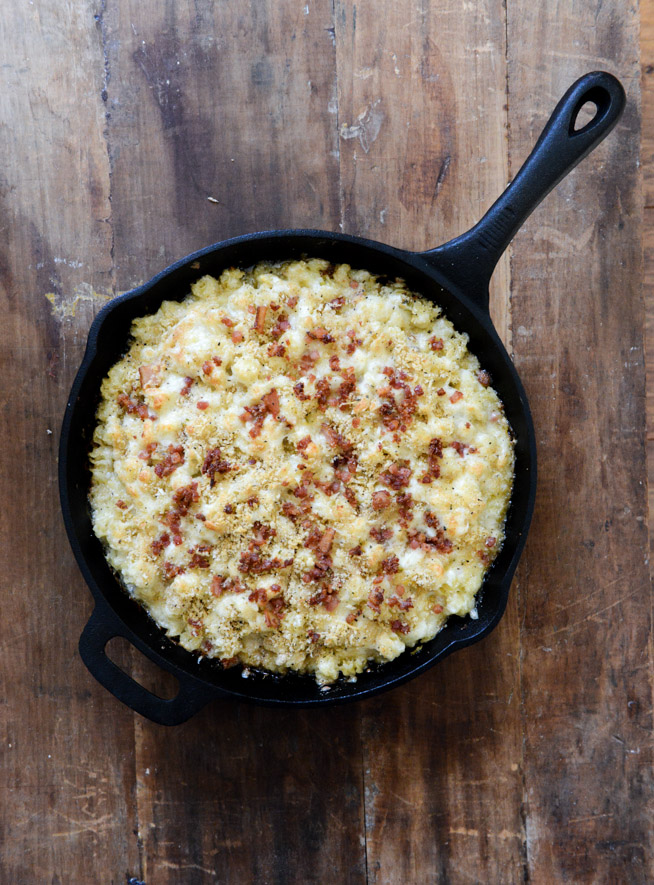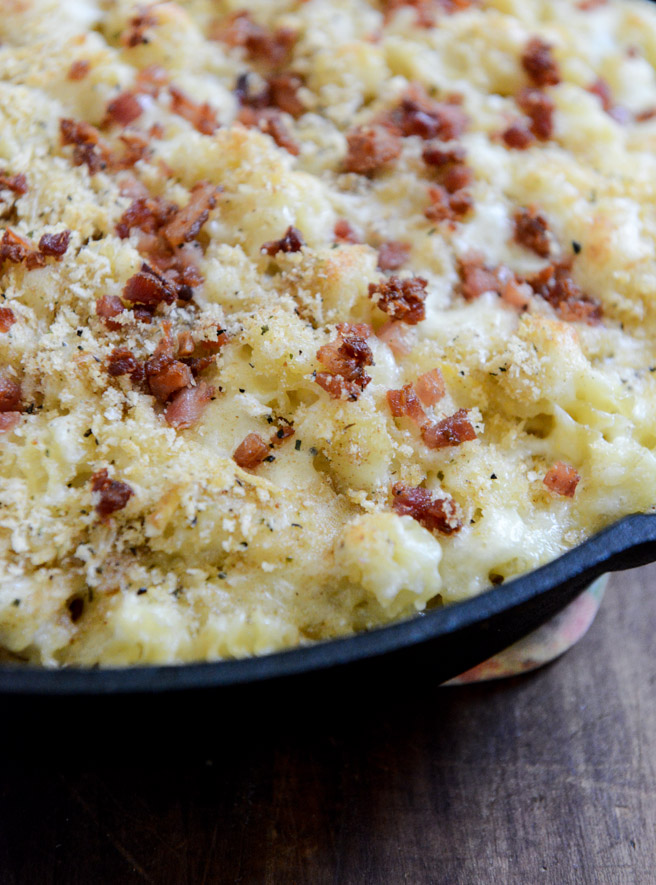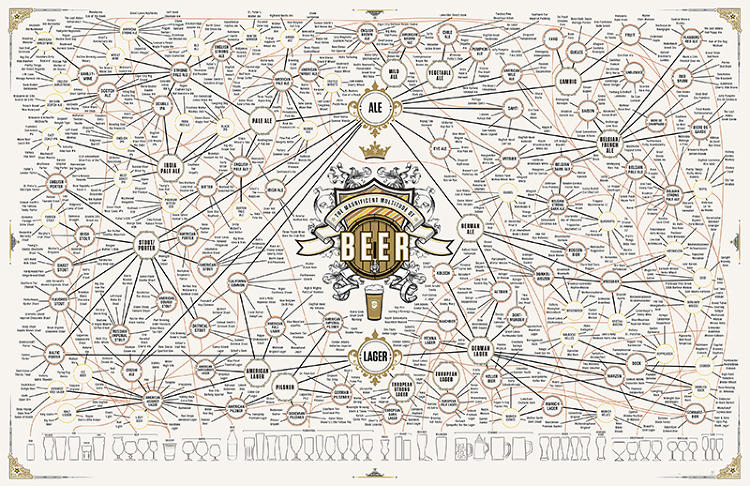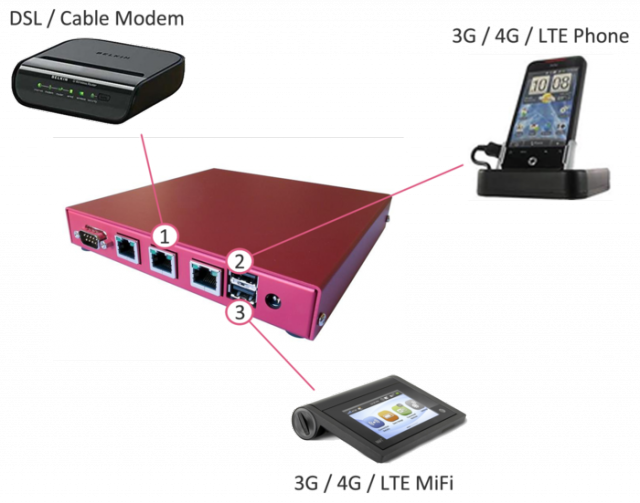
Kait Kübar is a freelance Estonian artist who most recently worked with Guerilla Games on the Killzone series.
The amount of details and level of realism in this lighthouse by Casper (Neverroads) is a rare sight to behold. From the way the angles come together in this octagonal structure to the complex matrix of supports underneath, the whole build took 6 months to bring to perfection. It also features 4 rooms and an attic, which you can see photos of in the builder’s Flickr gallery.

Here’s more time travel.

Look, I made a gif of this most awesome wizard at the Leaky Cauldron!
DUDE IS READING ‘A BRIEF HISTORY OF TIME’ BY STEPHEN HAWKING
I NEVER REALIZED
are you serious
I always assumed wizards just ignored science, because the fact that “magic” exists, can explain anything. But there are MuggleBorn wizards, ones who, until they were eleven, lived in the real world and learned science and things. Did they all just abandon that normal, muggle knowledge, like Harry did? It’s always been there, itching in the back of my mind.
FOUR FOR YOU SCIENCE WIZARD
YOU GO SCIENCE WIZARD
can we point out that he’s doing wandless magic too
like voldemort couldnt even do that shit
molly fuckin weasley couldnt fuckin do that
who are you
pretty sure this whole series has been about the wrong wizard guys
Plot Twist: He is able to do wandless magic because his comprehensive understanding of quantum physics means that he is the only wizard/witch to actually understand how magic works.

We've talked about the best ways to unclog a drain before, but these handy toilet-clearing tablets are helpful to have on-hand in case yours stops flushing the way it should. Plus, they're really easy to make.

Every week the Hackaday tip line receives an email about a new dev board. The current trend is towards ARM devices, and only once have we seen an x86-based device. Today that count went up to two. It’s called the 86Duino and stuffs an old Pentium II-class machine capable of running DOS, Windows, and Linux into the space of an Arduino,
The 86Duino Zero features, of course, an x86 Vortex86EX processor running at 300 MHz. This board also features 128 MB of RAM, 8MB of Flash and the usual compliment of Arduino pins in a Leonardo-compatible layout. Also on the SoC is a PCIE bus, Ethernet, a USB 2.0 host, and an SD card. There’s a lot of stuff on this board for such a small size.
Compared to the gigahertz-fast ARM boards around, the 86Duino isn’t really that fast, but that’s not the point. There’s obviously a market for extremely tiny x86 boards out there as evidenced by the Intel Galileo, and this board is $30 cheaper than the Intel offering.
There’s no video out on this board, so someone will have to figure out how to attach a graphics card to the PCIE connector before we build a miniaturized old school DOS gaming rig. Still it’s a very neat piece of hardware. If you need to have it now, here’s a vendor.
Thanks [sohaib] for sending this one in.
 Valve Software is now finally part of the Linux Foundation collective.
Valve Software is now finally part of the Linux Foundation collective.
![]()
[DoctorBeet] noticed the advertisements on the landing screen of his new LG smart television and started wondering about tracking. His curiosity got the better of him when he came across a promotional video aimed at advertisers that boasts about the information gathered from people who use these TVs. He decided to sniff the web traffic. If what he discovered is accurate, there is an invasive amount of data being collect by this hardware. To make matters worse, his testing showed that even if the user switches the “Collection of watching info” menu item to off it doesn’t stop the data from being phoned home.
The findings start off rather innocuous, with the channel name and a unique ID being transmitted every time you change the station. Based on when the server receives the packets a description of your schedule and preferred content can be put together. This appears to be sent as plain data without any type of encryption or obfuscation.
Things get a lot more interesting when he discovers that filenames from a USB drive connected to the television are being broadcast as well. The server address they’re being sent to is a dead link — which makes us think this is some type of debugging step that was left in the production firmware — but it is still a rather sizable blunder when it comes to personal privacy. If you have one of these televisions [DoctorBeet] has a preliminary list of URLs to block with your router in order to help safeguard your privacy.
[Thanks Radcom]
It's often said that if you want something done right, do it yourself. In an interview with IGN, Valve's Greg Coomer confirmed that the new Steam controllers will (for the time being at least) be produced by Valve, rather than turned over to a third-party for manufacturing.
On one hand, this sounds positive for the consumer. Valve believes that handling the production themselves will allow the product to get to market faster and they would have complete control in making sure it achieves the quality standard they're setting out for. It also means that they're taking all the risk on the venture, which could prove problematic if the controller doesn't sell. With Coomer admitting that Valve is, "disadvantaged when it comes to cost," they could really take a bath on this.
The new Steam controller Valve has been showing off is interesting at the least. I want one out of curiosity alone. Still, it looks alien and the idea of haptic pads in lieu of analog sticks could take some time to catch on, assuming it ever does.

I figured it was time to eat some bacon. I mean it’s been a whole week.

And what better way to eat it than with lots of cheese and Brussels sprouts?
My thoughts exactly.
I know. The Brussels thing is still weird but I am hooked. We will get over it eventually.

But wait, before we get to all that, today is my dad’s birthday! It’s a big birthday too. This has been THEE year of the big birthdays. Just not mine. It’s always been fun to have our birthdays so close together, and that just means one big weekend of celebration coming on up.
p.s. he probably wouldn’t touch this trashed up mac and cheese with a ten foot pool, but I will continue to try.

It’s actually kind of hilariously appropriate that I’m sharing this skillet o’ love today given that last night I ate some of the best Brussels sprouts of my life. They were fried, no less. Shocking? Nah.
I’m so gonna attempt a redo. In the meantime… we have this.

It’s a little bit of a cop out recipe, given that it’s essentially a copy of my autumn mac and cheese from three years ago. THREE years ago? What the heck. Where is this time going. I don’t understand. I swear I just made that yesterday.
I’m just going to stare at myself in the mirror today and shout STOP GROWING! and hope that it helps.

This version is also made in my trusty cast iron skillet, mostly because I adore this skillet mac and four cheese recipe so incredibly much. And it’s easy. And it’s different. And it’s cute!
Things just taste better when they come out a of skillet. That’s my story and I’m sticking to it.
Oh, um, also? Making this in a giant skillet gives more surface area for crunchy topping. You know crunchy topping. The topping that I single-handedly and selfishly consume before most people even get their first serving of pasta? Yeah. That crunchy topping.
Crunchy topping for liiiiiiiife.

Yield: serves 4 to 6
Total Time: 1 hour
1 pound of cooked pasta, smaller noodles desired
6 slices of bacon, chopped
1 shallot, diced
2 garlic cloves, minced
1/2 pound of brussels sprouts, stems removed and sliced/chopped
2 tablespoons unsalted butter
2 tablespoons flour
2 cups whole milk
1/2 cup half and half
8 ounces fontina cheese, freshly grated
4 ounces white cheddar cheese, freshly grated
2 ounces parmesan cheese, freshly grated
1/4 teaspoon nutmeg
1/4 cup panko bread crumbs
2 tablespoons fine breadcrumbs
Preheat oven to 375 degrees F.
Heat a large, 12-inch oven-safe skillet oven medium-low heat and add bacon. Cook until the fat is just rendered, then removed about 1/4 of the bacon and set it aside in a bowl. Cook the remaining bacon until completely crispy. Add in the shallot, garlic and brussels spouts, stirring well to coat. Cook until the brussels soften, about 5 minutes. Turn off the heat and toss the pasta in with the brussels.
To make the cheese sauce. heat a small saucepan over medium heat and add the butter. Once it's sizzling, whisk in the flour to create a roux and cook until it is golden brown, about 2 to 3 minutes. Pour in the milk and the half and half, stirring the entire time and cook until it is slightly thickened, about 5 minutes. Stir in the fontina, cheddar and parm, stirring until the cheese is melted. Stir in the nutmeg. Once the cheese is melted, pour it over the pasta in the skillet and toss well to coat. Add the panko and fine breadcrumbs over top of the pasta and sprinkle on the bacon that your set aside earlier.
Bake for 30 to 35 minutes, or until the top is golden and bubbly.

I ate all of that. No shame.
©2012 How Sweet It Is
How long would it take for people to notice their weight gain if the mean radius of the world expanded by 1cm every second? (Assuming the average composition of rock were maintained.)
Dennis O'Donnell
The Earth is not, currently, expanding.[1]Yes, I have a citation for this.
"In conclusion, no statistically significant present expansion rate is detected by our study within the current measurement uncertainty of 0.2 mm yr−1."
Wu, X., X. Collilieux, Z. Altamimi, B. L. A. Vermeersen, R. S. Gross, and I. Fukumori (2011), Accuracy of the International Terrestrial Reference Frame origin and Earth expansion, Geophys. Res. Lett., 38, L13304, doi:10.1029/2011GL047450.
People have long suggested that it might be. Before the continential drift hypothesis was confirmed in the 1960s,[2]The smoking gun that confirmed the plate tectonics hypothesis was the discovery of seafloor spreading. The way seafloor spreading and magnetic pole reversal neatly confirmed each other is one of my favorite examples of scientific discovery at work. people had noticed that the continents fit together. Various ideas were put forward to explain this, including the idea that the ocean basins were rifts that opened in the surface of a previously-smooth Earth as it expanded. This theory was never very widespread,[3]It turns out it's kind of dumb. although it still periodically makes the rounds on YouTube.
To avoid the problem of rifts in the ground, let's imagine all the matter in the Earth, from the crust to the core, starts expanding uniformly. To avoid another Drain the Oceans scenario, we'll assume the ocean expands, too.[4]As it turns out, the ocean is expanding, since it's getting warmer. This is (currently) the main way global warming is raising the sea level. All human structures will stay.
t = 1 second:

As the Earth started expanding, you'd feel a slight jolt, and might even lose your balance for a moment. This would be very brief. Since you're moving steadily upward at 1 cm/s, you woudn't feel any kind of ongoing acceleration. For the rest of the day, you wouldn't notice much of anything.
t = 1 day:
After the first day, the Earth would have expanded by 864 meters.

Gravity would take a long time to increase. If you weighed 70 kilograms when the expansion started, you'd weigh 70.01 at the end of the day.
What about our roads and bridges? Eventually, they would have to break up, right?
Not as quickly as you might think. Here's a puzzle I once heard:
Imagine you tied a rope tightly around the Earth, so it was hugging the surface all the way around.

Now imagine you wanted to raise the rope one meter off the ground.

How much extra length will you need to add to the rope?
Though it may seem like you'd need miles of rope, the answer is 6.28 meters. Circumference is proportional to radius, so if you increase radius by 1 unit, you increase circumference by 2π units.
Stretching a 40,000-kilometer line an extra 6.28 meters is pretty negligible. Even after a day, the extra 5.4 kilometers would be handled easily by virtually all structures. Concrete expands and contracts by more than that every day.[5]Lawrence Grybosky, Thermal Expansion and Contraction
After the initial jolt, one of the first effects you'd notice would be that your GPS would stop working. The satellites would stay in roughly the same orbits, but the delicate timing that the GPS system is based on would be completely ruined within hours. GPS timing is incredibly precise; of all the problems in engineering, it's one of the only ones in which engineers have been forced to include both special and general relativity in their calculations.
Most other clocks would keep working fine. However, if you have a very precise pendulum clock, you might notice something odd—by the end of the day, it would be three seconds ahead of where it should be.
t = 1 month:
After a month, the Earth would have expanded by 26 kilometers—an increase of 0.4%—and its mass would have increased by 1.2%. Surface gravity would only have gone up by 0.4%, rather than 1.2%, since surface gravity is proportional to radius.[6]Mass is proportional to radius cubed, and gravity is proportional to mass times inverse square of radius, so radius3 / radius2 = radius.
You might notice the difference in weight on a scale, but it's not a big deal. Gravity varies by this much between different cities already. This is a good thing to keep in mind if you buy a digital scale. If your scale has a precision of more than two decimal places, you need to calibrate it with a test weight—the force of gravity at the scale factory isn't necessarily the same as the force of gravity at your house.
While you might not notice the increased gravity just yet, you'd notice the expansion. After a month, you'd see a lot of cracks opening up in long concrete structures and the failure of elevated roads and old bridges. Most buildings would probably be ok, although those anchored firmly into bedrock might start to behave unpredictably.[7]Just what you want in a skyscraper.
At this point, astronauts on the ISS would start getting worried. Not only would the ground (and atmosphere) be rising toward them, but the increased gravity would also cause their orbit to slowly shrink. They'd need to evacuate quickly; they'd have at most a few months before the station reentered the atmosphere and deorbited.
t = 1 year:
After a year, gravity would be 5% stronger. You'd probably notice the weight gain, and you'd definitely notice the failure of roads, bridges, power lines, satellites, and undersea cables. Your pendulum clock would now be ahead by five days.
What about the atmosphere?
If the atmosphere isn't growing like the land and water are, air pressure would start dropping. This is due to a combination of factors. As gravity increases, then air gets heavier. But since that air is spread out over a larger area, the overall effect would be decreasing air pressure.
On the other hand, if the atmosphere is also expanding, surface air pressure would rise. After years had passed, the top of Mt. Everest would no longer be in the "death zone".[8]See What-If #64. On the other hand, since you'd be heavier—and the mountain would be taller—climbing would be more work.
t = 5 years:
After five years, gravity would be 25% stronger. If you weighed 70 kg when the expansion started, you'd weigh 88 kg now.
Most of our infrastructure would have collapsed. The cause of the collapse would be the expanding ground below them, not the increased gravity. Surprisingly, most skyscrapers would hold up fine under much higher gravity.[9]Although I wouldn't trust the elevators. For most of them, the limiting factor isn't weight, but wind.
t = 10 years:
After 10 years, gravity would be 50% stronger. In the scenario where the atmosphere isn't expanding, the air would become thin enough to be difficult to breathe even at sea level. In the other scenario, we'd be ok for a little while longer.
t = 40 years:
After 40 years, Earth's surface gravity would have tripled.[10]Over decades, the force of gravity would grow slightly faster than you'd expect, since the material in the Earth would compress under its own weight. The pressure inside planets is roughly proportional to the square of their surface area, so the Earth's core would be squeezed tightly. At this point, even the strongest humans would only be able to walk with great difficulty. Breathing would be difficult. Trees would collapse. Crops wouldn't stand up under their own weight. Virtually every mountainside would see massive landslides as material sought out a shallower angle of repose.
Geologic activity would also accelerate. Most of the Earth's heat is provided by radioactive decay of minerals in the crust and mantle,[12]Although some radioactive elements, like uranium, are heavy, they get squeezed out of the lower layers because their atoms don't mesh well with the rock lattices at those depths. For more, see this chapter and this article. and more Earth means more heat. Since the volume expands faster than the surface area, the overall heat flowing out per square meter will increase.
It's not actually enough to substantially warm the planet—Earth's surface temperature is dominated by the atmosphere and the Sun—but it would lead to more volcanoes, more earthquakes, and faster tectonic movement. This would be similar to the situation on Earth billions of years ago, when we had more radioactive material and thus a hotter mantle.
More active plate tectonics might be good for life. Plate tectonics play a key role in stabilizing the Earth's climate, and planets smaller than Earth (like Mars) don't have enough internal heat to sustain long-term geologic activity. A larger planet would allow for more geologic activity, which is why some scientists think that exoplanets slightly larger than Earth ("super-Earths") could be more friendly to life than Earth-sized ones.[11]Sasselov, Dimitar D.. The life of super-Earths: how the hunt for alien worlds and artificial cells will revolutionize life on our planet. New York: Basic Books, 2012.
t = 100 years:
After 100 years, we'd be experiencing over six gees of gravity. Not only would we be unable to move around to find food, but our hearts would be unable to pump blood to our brains. Only small insects (and sea animals) would be physically able to move around. Perhaps humans could survive in specially-built controlled-pressure domes, moving around by keeping most of our bodies submerged in water.

Breathing in this situation would be difficult. It's hard to suck in air against the weight of the water, which is why snorkels can only work when your lungs are near the surface.
Outside of low-pressure domes, the air would become unbreathable for a different reason. At somewhere around 6 atmospheres, even ordinary air becomes toxic.[13]R.M. Franz and P.C. Schutte, Barometric hazards within the context of deep-level mining, The Journal of The South African Institute of Mining and Metallurgy Even if we'd managed to survive all the other problems, by 100 years, we'd be dead from oxygen toxicity. Toxicity aside, breathing dense air is difficult simply because it's heavy.
Black hole?
When would the Earth eventually become a black hole?
It's hard to answer that, because the premise of the question is that the radius is steadily expanding while the density stays the same—whereas a black hole, the density increases.
The dynamics of really huge rocky planets aren't often analyzed, since there's no obvious way that they could form; anything that large will have enough gravity to gather hydrogen and helium during planet formation and become a gas giant.
At some point, our growing Earth would reach the point where adding more mass causes it to contract, rather than expand. After this point, it would collapse into something like a sputtering white dwarf or neutron star, and then—if its mass kept increasing—eventually become a black hole.
But before it gets that far ...
t = 300 years:
It's a shame humans wouldn't live this long, because at this point, something really neat would happen.
As the Earth grows, the Moon would, like all our satellites, gradually spiral inward.[14]Plummer, H. C., Note on the motion about an attracting centre of slowly increasing mass, Monthly Notices of the Royal Astronomical Society, Vol. 66, p.83 After several centuries, it would be close enough to the swollen Earth that the tidal forces between Earth and the Moon would be stronger than the gravitational forces holding the Moon together.
When the Moon passed this boundary—called the Roche limit—it would gradually break apart ...

... and Earth would, for a short time, have rings.
Ahead of things to come this week, NVIDIA has announced a preemptive price cut for a couple of their mainstream GeForce products. As of today, the GTX 660 is getting an official price cut to $179, which is down from the $200 or so prices that it was at a bit earlier this year. Meanwhile the GTX 650 Ti Boost is getting a price cut down to $149 for the 2GB model, and $129 for the 1GB model.
| Fall NVIDIA MSRPs | ||||
| Video Card | MSRP | |||
| GeForce GTX 780 | $649 | |||
| GeForce GTX 770 | $399 | |||
| GeForce GTX 760 | $249 | |||
| GeForce GTX 660 | $179 | |||
| GeForce GTX 650 Ti Boost 2GB | $149 | |||
| GeForce GTX 650 Ti Boost 1GB | $129 | |||
Interestingly, NVIDIA did take the time to reiterate that these are the only price cuts that are taking place. The GTX 760 and GTX 770 are not getting price cuts and will remain at $249 and $399 respectively.
You guys.
Let’s take a moment. What if I told you you could have a delicious pita stuffed with homemade falafel, veggies, tzatziki sauce and hot sauce ready for lunch in 20 minutes flat? Beats canned soup and boring deli sandwiches, that’s for sure.
I’m gushing today over my friend Catherine’s new cookbook, Weelicious Lunches. If you haven’t seen it, you MUST check it out. If all the recipes are half as good as these falafel bean patties, then I don’t even know. Seriously. I get stuck in lunch ruts all the time. Maybe you guys think I eat these super cool lunches every day because I cook for a living but allow me to set the record straight : most days, my lunches consist of a big salad and canned {gulp} soup, egg sandwiches or peanut butter and jelly. I’m about as boring as they come, folks. So, when Catherine sent me her new book, which is filled with more than 160 creative lunch ideas, I was all over it! The recipes are easy, fun and healthy.
Today I’m sharing with you these amazing falafel bean patties straight out of the cookbook! Y’all know how much I adore falafel {the falafel from l’as du fallafel in Paris has been noted as my favorite meal on earth} but it’s not something I usually make at home for myself. I think I was just intimidated by the process. Well…not anymore! I can already tell this will be a staple recipe in my house…especially when stuffed in a loaded down pita.
I’m not exaggerating a bit when I tell you how simple these falafel patties are to make. Literally, you just throw all the ingredients into your food processor….
Give it a big ol’ whirl and bam! Done. Now all you have to do is form the patties and pan sear them in a little canola oil.
Catherine says they freeze and reheat beautifully but I didn’t have any extras this go around to try that myself. Maybe next time!
Like I said, I stuffed my hot falafel patties into a warm whole wheat pita with tzatziki sauce, cucumbers, lettuce and hot sauce. It was heaven. I highly recommend you guys try these out as soon as possible as well as give the new Weelicious Lunches book a go! Especially if you have little ones. Or husbands that take boxed lunches to work every day. ![]()
from Weelicious Lunches
Ingredients:
1 15-oz can chickpeas, drained and rinsed
1 garlic clove
1/4 cup chopped onion
1/4 cup chopped cilantro
1/4 cup chopped parsley
1/2 cup breadcrumbs
1 tsp cumin
1/2 tsp salt
olive or canola oil for pan searing
tzaziki sauce for serving
Directions:
Place all ingredients except for oil and tzatziki sauce in a food processor and process until smooth and combined.
With moist hands, form patties out of 1 tbsp of the falafel mixture. Place on a plate while you form remaining patties.
In a medium saute pan over medium heat, heat about 2 tbsp oil {enough to cover the bottom of the pan}. When hot, add half the patties to the pan and saute for 4 minutes on each side, or until golden. Remove and drain on paper towels while you finish the next batch of patties.
Cool and serve with tzatziki sauce!
Time:
20 minutes
Pin It

When I start to see big displays of canned pumpkin adorning the endcaps of supermarket aisles, my heart skips a beat. While I really enjoy baking with pumpkin, it’s also a sign that my favorite time of year is here. Yes, I love the beautiful, changing leaves (they are a million different colors right now!), the crisp air, cozy sweatshirts, and nightly mugs of hot chocolate. However, those displays also signal that the holidays are right around the corner. I love all holidays, but Thanksgiving has always been extra special to me. While Christmas is usually dominated by shopping and gifts, Thanksgiving is allowed to bask in the glory of amazing food, great wine and a day spent just being with friends and family. I think that’s why pumpkin tugs at my heart strings so much.
Never one to settle for plain pumpkin pie, I love experimenting with different pumpkin recipes. This combination of an oatmeal crumb bar and pumpkin pie filling is so unique, I didn’t wait long to try it.

This is the first time I tried a combination of oats and pumpkin. What took me so long?! The flavors are such a natural complement to each other, and the texture contrast between the oat crumb and the silky smooth pumpkin pie filling is fantastic. The top is nice and crunchy, then you get to the creamy pie layer, followed up by the firm crust. I may or may not have eaten multiple pieces when I originally cut into them. Oops!
These bars have got me in the mood to plan a Thanksgiving menu! Do you have any pumpkin recipe requests for this fall?

One year ago: Maple-Walnut Ice Cream
Three years ago: Russian Pound Cake
Four years ago: Marshmallow Crunch Brownie Bars
Five years ago: Lavash Crackers
Pumpkin Pie Oatmeal Crumb Bars
Yield: 16 bars
Prep Time: 15 minutes
Cook Time: 50 to 55 minutes
Total Time: 1 hour 10 minutes
Pumpkin pie filling sandwiched between two layers of oatmeal crumb bars.
Ingredients:
For the Oatmeal Crumb:
1¼ cups all-purpose flour
1¼ cups quick oats
½ teaspoon baking soda
½ teaspoon salt
½ cup granulated sugar
½ cup light brown sugar
¾ cup unsalted butter, melted and cooled slightly
1 teaspoon vanilla extractFor the Pumpkin Pie Filling:
¼ cup granulated sugar
¼ cup light brown sugar
1 teaspoon ground cinnamon
½ teaspoon ground nutmeg
¼ teaspoon ground ginger
1 pinch ground cloves
¼ teaspoon salt
1 egg
1 egg yolk
½ teaspoon vanilla extract
1¼ cups canned pumpkin
⅓ cup evaporated milkDirections:
1. Make the Oatmeal Crumb: Preheat oven to 350 degrees F and adjust oven racks to center and upper-middle positions. Line an 8-inch square baking pan with parchment paper, allowing excess to hang over the sides; set aside.
2. In a medium mixing bowl, whisk together the flour, oats, baking soda and salt to combine. Add both the granulated sugar and brown sugar and mix until no clumps remain. Add the melted butter and vanilla extract, then stir with a fork until the mixture is evenly moistened. Press half of the mixture into the prepared pan and bake on the center rack for 15 minutes.
3. Make the Pumpkin Pie Filling: Meanwhile, in another medium bowl, whisk together the granulated sugar, brown sugar, cinnamon, nutmeg, ginger, cloves and salt. Add the egg, egg yolk and vanilla and whisk until well blended. Finally, whisk in the pumpkin, and then the evaporated milk until the mixture is smooth and thoroughly combined.
4. When the crust has finished baking, pour the pumpkin pie filling over the bottom crust and return it to the center rack of the oven for 15 minutes. Remove it from the oven, pinch the remaining oatmeal crumb mixture into small pieces and sprinkle over the top of the pumpkin pie filling. Return the pan to the oven, placing it on the upper-middle rack, and bake for an additional 20 to 25 minutes, until it is golden on top and the center only jiggles slightly.
5. Remove from the oven and allow to cool to room temperature, at least 1 to 2 hours. Then, transfer the pan to the refrigerator and chill for at least 2 hours. Cut into squares and serve. Leftovers can be stored in an airtight container in the refrigerator for up to 5 days.
(Recipe from Cooking Classy)
If you're a vegetarian (or just enjoy eating meat-free from time to time), it can sometimes feel like you're getting the short end of the stick when it comes to delicious meal options—but not today! We've gathered 25 of our favorite vegetarian friendly dishes (like Emma's favorite baked macaroni).
Start your day off right with a twice baked potato.
Craving a late night snack? Try these brown sugar baked fries.
If you're craving a burger, give this spicy edamame burger a whirl.
Doesn't this baked risotto look delicious?
How about some pea soup on a chilly fall day?
Try a farro + kale salad to rock your salad world!
Try some accordion potatoes with rosemary and garlic as a side dish with dinner tonight.
Craving chips? These brussel sprout chips will hit the spot.
Yum! Portobello mushroom burger!
Let this curried pumpkin soup feed your fall pumpkin craving.
Cheese please! Have some Newcastle fondue.
If you ask me, this falafel is fa-wonderful.
Make your own colorful pasta from scratch!
Make your mouth water with these fried pickles + spicy dill pickle mayo.
How cute are these mini-quiches?
Wake up to buttermilk biscuits with mushroom gravy.
Keep the soup train rolling with this mushroom + farro soup.
Spicy baked edamame make a great afternoon snack.
Still need more pumpkin? This pumpkin risotto is just what you're looking for.
These Thai style green beans have the perfect amount of spice.
Warm up your fall months with this Asian style dumpling soup!
Show sweet potatoes a little love with the Spicy Chipotle Potato Soup.
Explore a few options with the vegetarian chili: 3 ways.
Or keep it light, sweet and fresh with this strawberry balsamic vinaigrette.
Do you have any go-to vegetarian recipes? xoxo. Emma + Elsie
 Advertised as "the most complete charting of beer ever," Pop Chart Lab's 60" x 40" wall chart is printed on 100lb archival stock and is available for pre-order at $80. [via FastCo]
Advertised as "the most complete charting of beer ever," Pop Chart Lab's 60" x 40" wall chart is printed on 100lb archival stock and is available for pre-order at $80. [via FastCo]
Are you struggling to play Netflix on a 2Mbps Internet connection? A new cloud-connected router using the same type of multipath technology that Apple put in the iPhone might solve your problem.
Launched this week on Indiegogo, the $199-$289 system from Multipath Networks in Ireland combines connections such as DSL, cable, 3G, and 4G into one pipe. Up to four connections can be used at once.
The idea of aggregating mobile and wired signals in the home is an old one. But it certainly hasn't become commonplace, and Multipath Networks takes advantage of the new Multipath TCP protocol that's used in the iPhone to let Siri switch between Wi-Fi, 3G, and LTE quickly and seamlessly.
Read 20 remaining paragraphs | Comments
High-speed video cameras aren't cheap. That's a common understanding in video production today, which is what gates the use of extreme slow-motion footage to productions that can afford or have access to professional high-speed camera equipment. In the consumer market, it's true that we're seeing more cameras dip their toes into high-speed recording--notably the iPhone 5S with 120fps recording at 720p and the GoPro Hero 3 with up to 240fps at 480p. And yes, the natural motion of everyday subjects (read: cats, dogs, and babies) look delightful when slowed down by four or eight times their normal speed. But if you want to catch the popping of a balloon or measure the ballistics of a bullet, that's the realm of $100,000+ cameras made by companies like Vision Research and Photron.
But why are these professional high-speed cameras so expensive? And is there a way to make that tech more affordable? Those were the questions posed by Mike Matter and his collaborators in the founding of the bay area startup Edgertronic. Through a (just funded) Kickstarter project, Edgertronic is attempting to democratize professional-grade high-speed videography with its eponymous camera, priced at a reasonable $5,000. A high-end "microscope for time", finally within relative reach.
I visited Mike over the weekend to check out the latest build of the Edgertronic camera and get a demo of it in action. You'll find sample videos below. But more importantly, I wanted to learn the answers to the same why's that Mike and Edgertronic are posing to this exclusive high-end market. The first step: understanding how a high-speed video camera actually works.
At its core, a high-speed video camera is a lot of any typical video camera, which in today's terms is not much different than a digital still camera. That means it captures light passed through a optical lens onto a digital sensor, passing that light data through circuitry to an image processor, and then storing the resulting digital image information on some kind of memory. Sensor, processor, and memory are the essential electronic components to any digital camera, and the type of quality of each factor into what kind of photo or video you're able to record. Standard video recording, for example, requires a sensor with photodiodes that are able to read light data at a rate of over 30 times a second, and a processor that is fast enough to render that data into a video and store it to memory. Fortunately, for today's technology, 30Hz recording of high-resolution video is simple and cheap. But when a camera sensor is required to record light at five or ten thousand times a second, and pass that data to a processor at a rate of several hundred megapixels a second, commodity hardware isn't going to cut it.
Except, off-the-shelf technology is exactly what makes Edgertronic's high-speed camera work. Instead of spending millions to develop their own sensor and processor, Mike and his team looked to components they could readily buy--the trick was finding the right balance of image sensor and processor to suit the needs of high-speed video recording. They ended up with three options for sensors, and ended up choosing a 18x14mm CMOS sensor--roughly the size of APS-C--that accounts for almost half the cost of the camera. It wasn't the fastest sensor available, but had two characteristics that made it ideal for Edgertronic's needs: big pixels and a global shutter.
You can think of a digital camera sensor as a grid of pixels, each a photodiode receptor that's able to capture light data. A general rule of thumb is that the larger the physical size of these pixels, the more light can be captured, which leads to images with lower noise and better dynamic range. Two primary factors determine the pixel size: the overall size of the sensor, and the number of pixels on it. Manufacturers can design sensors to vary these factors to optimize for pixel size, which is how Apple made a big deal about the iPhone 5S's 8MP sensor having 1.5 micron-wide pixels. Edgertronic's camera sensor, the size of sensors found in entry-level DSLRs, only has a resolution of 1280x1024--paltry by still image standards, but enough for 720p video. But that also means its pixels are a massive 14 microns wide. That kind of light sensitivity is crucial to high-speed video recording because of the other critical video recording factor: shutter speed.
When we talk about a video's frame rate, that's referring to the capability of the sensor to store and pass along light data and the image processor's ability to record those frames to a video file. But also essential to video recording is how much light is allowed to fall onto the sensor for each frame, a factor measured in fractions of second. What gates this duration is the camera's shutter. On a still camera, like a DSLR, a physical mechanical shutter flips at a very high speed to allow a very specific duration of light to hit the sensor. (On high-end DSLRs, very fast shutters are achieved using a combination of mechanical and electronic shutters). Video camera sensors have electronic shutters--extra circuitry on the sensor that relieves the charge of each pixel at extremely quick intervals to "turn off" the light reception capabilities of that pixel at a predetermined rate. The challenge for CMOS sensors is that most use "rolling" shutters, meaning that the pixels are discharged linearly, row by row. Consequently, rolling shutters are susceptible to image artifacts like skewed or wobbly objects for objects in fast motion, which makes them unsuitable for high-speed recording.
A global electronic shutter, on the other hand, discharges all the pixels at once, which gives each pixel on the sensor a consistent amount of light exposure per frame. The CMOS sensor that Edgertronic is using is that type of sensor, rated at a maximum speed of 1/200,000 seconds.
Of course, there is other important technology that goes into making a high-speed camera. Edgertronic credits its competitive advantage to its engineers' ability to efficiently pair the sensor and processor hardware with good electronics design and FPGA code on its custom board. The data rates that come from a high-speed camera sensor are extremely fast, and according to Mike, the challenge is optimizing for that data load with as little overhead or noise as possible. This engineering--which goes way over my head--is the real secret sauce that allows Edgertronic's camera to work.
And work it does. Mike took me to his backyard, where he set up a demo of the camera. I got to examine the latest Edgertronic design, which is an impressively barebones design. If the idea was to pare the camera to its essentials, Edgertronic has done a good job. The aluminum chassis that houses two electronics boards is lightweight, with ports on the back and a Photodiox lens adapter on the front. Edgertronic is compatible with Nikon F-mount lenses (approximately 2x crop factor), a design decision informed by the wide availability of Nikkor lenses with manual aperture rings. There are two quarter-inch tripod mounts on the sides of the camera, and the body is designed to act as a heatsink with a small fan for active cooling. The camera is almost button-less, with only a tiny button to initiate a hard reset. Controls and the camera's live-view are operated through the Chrome web browser on a tethered computer, in this case a MacBook. There's no HDMI or SDI video out--additions deemed unnecessary to the scope of this camera, and would have only added additional costs and overhead.
From the web browser window (where the live view plays with a low latency delay and at around 7-10fps), you're able to adjust the recording settings of the camera. The settings are listed in order of desired importance, and will automatically fill in the maximum allowed values for some entries depending on what you've chosen for others. Because of the data-processing limits of the camera system, configuring high-speed video recording is a matter of trade-offs. You have to find a balance of video resolution and frame rate.
At the max resolution of 1280x1024, the highest frame rate the Edgertronic can record at is 494fps. And with the max frame rate of 17,791fps, the highest-resolution you can record is 192x96 pixels. For the HD resolution of 1280x720, 700fps is the cap--already far superior to what the Sony FS700 prosumer camera can do. I think that the sweet spot for the Edgertronic is 640x360 resolution (standard for web video), at over 2,000fps. Interestingly enough, because of the way sensor data is processed, increases in horizontal resolution (how tall a video is) have a bigger impact on performance than increasing vertical resolution (how wide a video is).
Another operational consideration is that finding focus with the Edgertronic may be more difficult that other cameras with built-in LCD displays. Manual focus using the lens ring worked just fine for the demos, but the software doesn't yet have any focus assistance tools like edge detection--you have to play it all by eye.
Like high-end high-speed cameras, Edgertronic allows for pre, post and mid triggers of video capture. 8GB of DRAM buffer records up to 8 seconds of video (also a function of resolution and frame rate), so when you hit the capture button on either the software control or a wired physical trigger, the camera can encode to video an event after the fact.
Encoding and record speed is comparable to that of a camera like the FS700, at a rate of 60 frames per second. So for example, if the camera captured one second of 1000fps video for a total of 1000 frames of footage, that video would take about 17 seconds to encode (1000frames divided by 60 frames per second) and store to the SD card. I was told that the H.264 encoding is currently set for a variable bitrate averaging 20-30 mbits/second and tuned for i-frame interval encoding. These are settings that users will be able to adjust in the future, too.
In terms of video quality, Edgertronic's output looks really good, especially at resolutions of 640x480 and higher. The 700fps video recorded at 720p is crisp and detailed, and the high shutter speed removed any blur so each frame is as sharp as the next--important for academic purposes. Even the 5,000fps video recorded at 288x288 looked usable when stretched out. At 17,000 frames per second, the low res video looked about as good as the 960fps video we shot with the FS700 last year, but the framerate was high enough to let me see exactly how a balloon tears apart from being overblown. Edgertronic can't compete with cameras that can record full 1080p or 720p at over 2000fps, and its sensor maxes out at 400 ISO, but it's mighty impressive for a camera that's less than 1/20th the cost of what's used by Zack Snyder or The Slo Mo guys.
Edgertronic's target market isn't necessarily Hollywood, though. As Mike tells it, his goal is to get these cameras into the hands of hobbyists and independent filmmakers--people who otherwise wouldn't otherwise dream of having access to this tool. The idea is to make high-speed video--real high-speed video--more attainable to the masses. It's the law of the instrument: put a high-speed camera in everyone's hands and we all start seeing the world differently.
Test 1: 700fps, 1280x720, ISO 200, Shutter 1/5000s
Test 2: 5000fps, 288x288, ISO 200, Shutter 1/6000s
Test 3: 17,791fps, 192x96, ISO 200, Shutter 1/22000s
One year ago today Princess Vader goes to Disneyland: This little girl reportedly visited Disneyland with her parents in her adorable princess Vader Hallowe'en costume, taking it for a test drive.
Princess Vader goes to Disneyland: This little girl reportedly visited Disneyland with her parents in her adorable princess Vader Hallowe'en costume, taking it for a test drive.
Five years ago today
Olympics reach a new low: trademarking the Canadian national anthem and threatening lawsuits over competing uses: The International Olympic Committee has trademarked a line from the Canadian national anthem, "with glowing hearts," and is threatening to sue anyone who uses the line in Canada, as part of the Vancouver Games.
Ten years ago today
P2P Legal defense fund downhillbattle.org launches: A new project known as the "Peer-to-Peer Legal Defense Fund" was launched today by a group calling themselvers Downhill Battle.